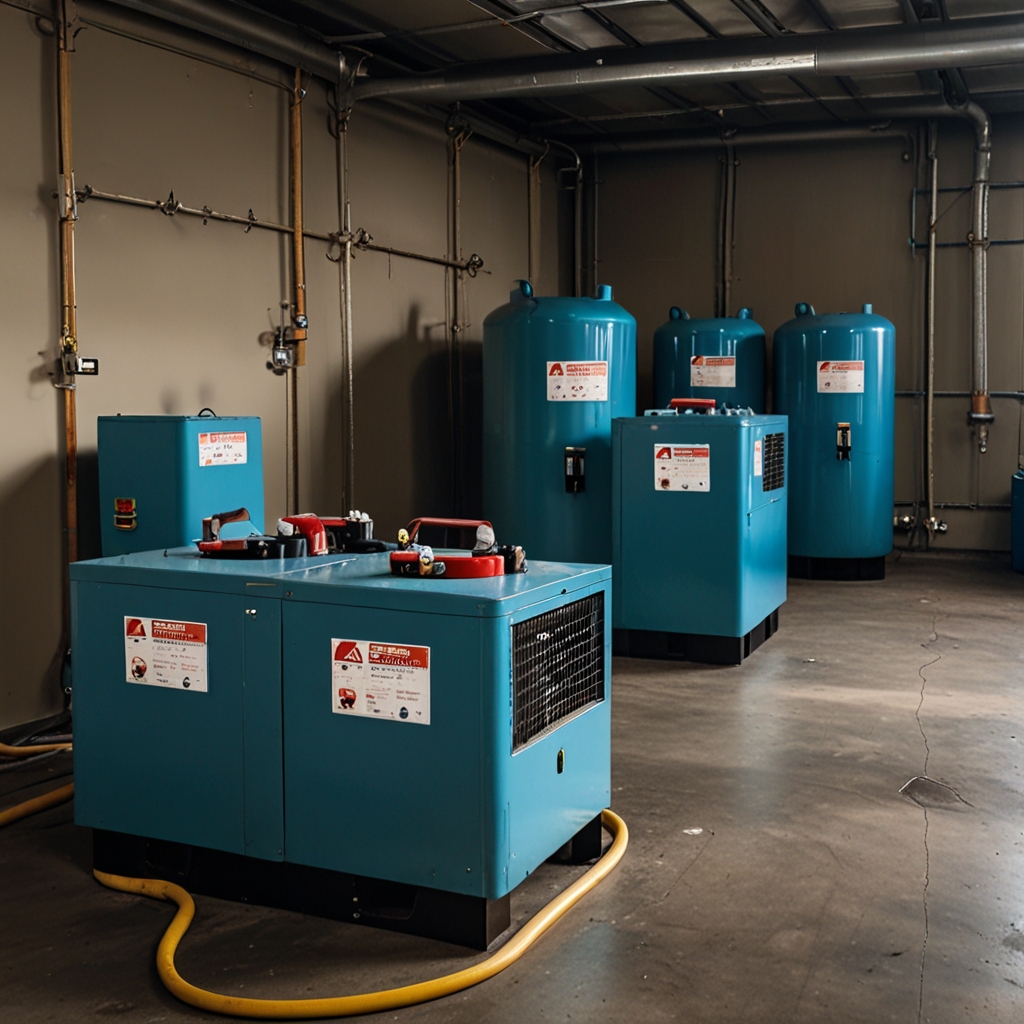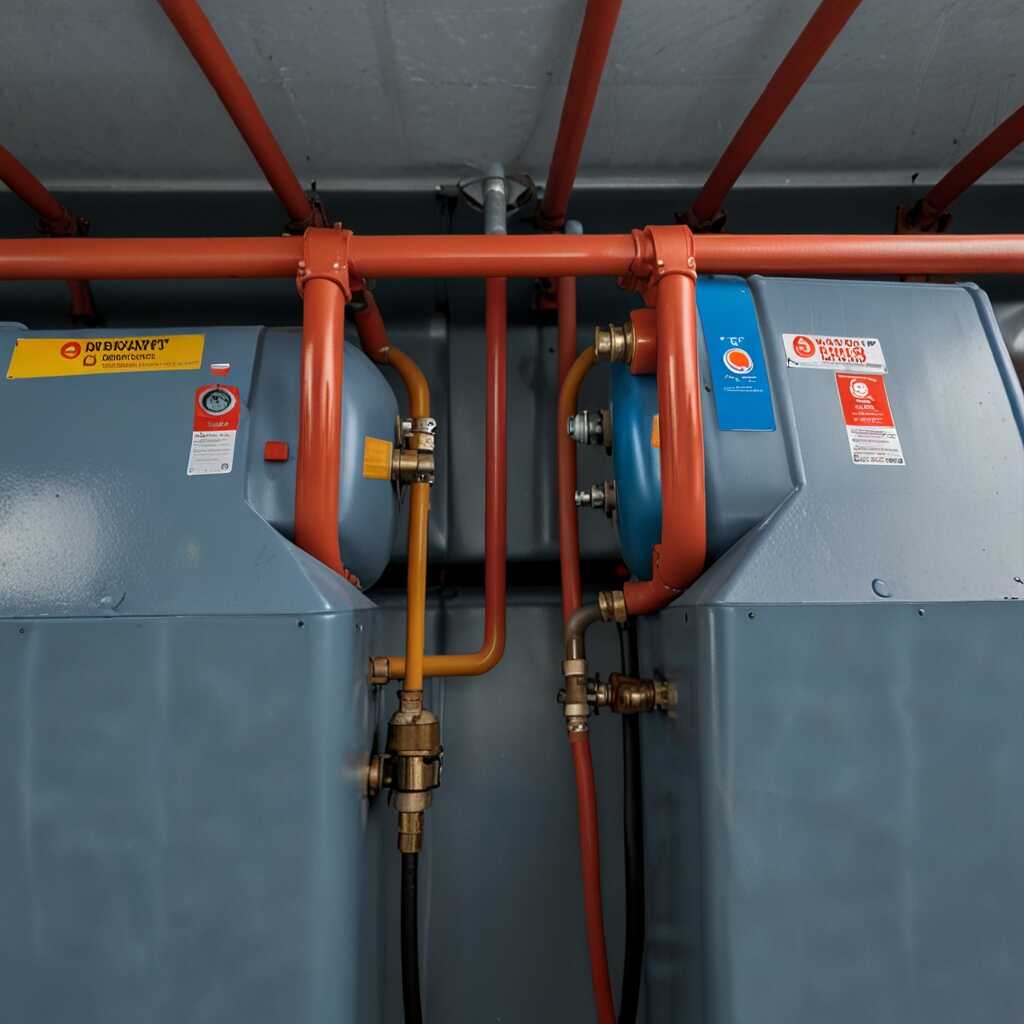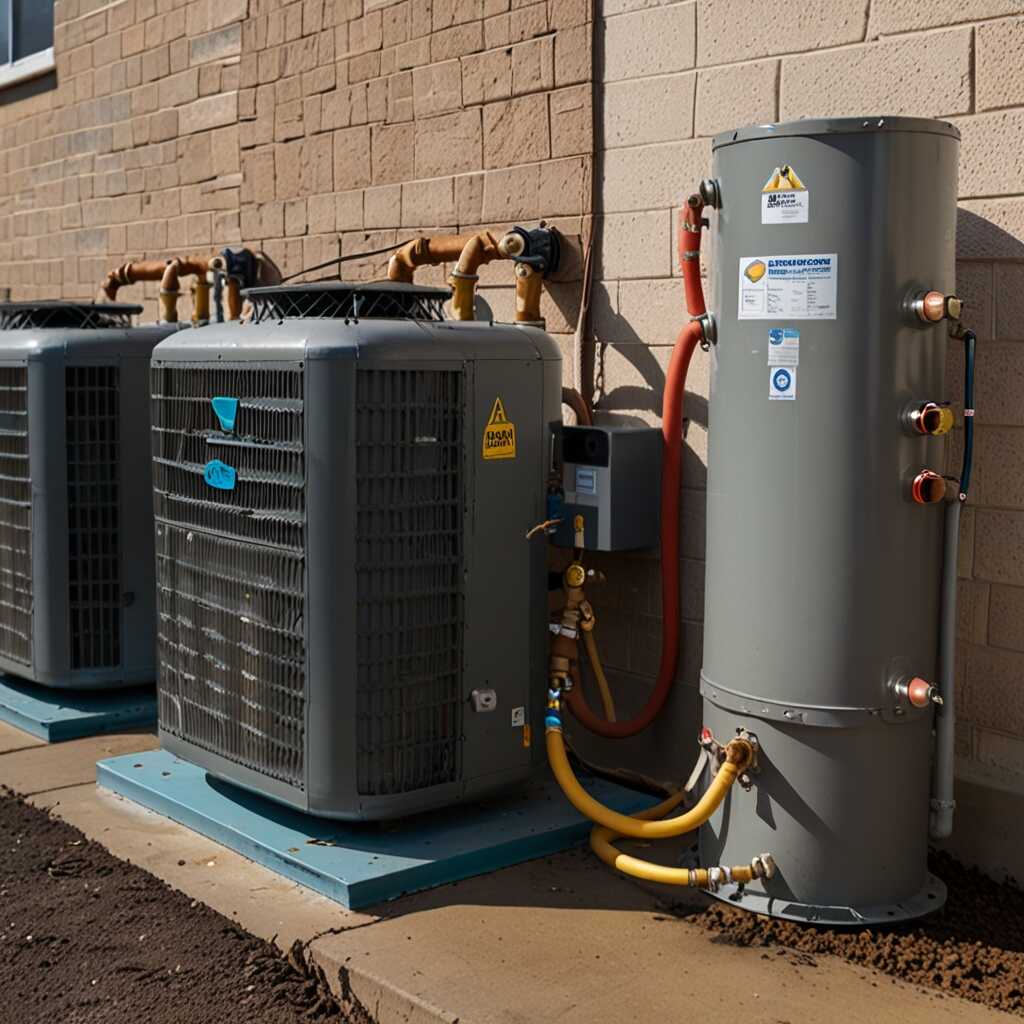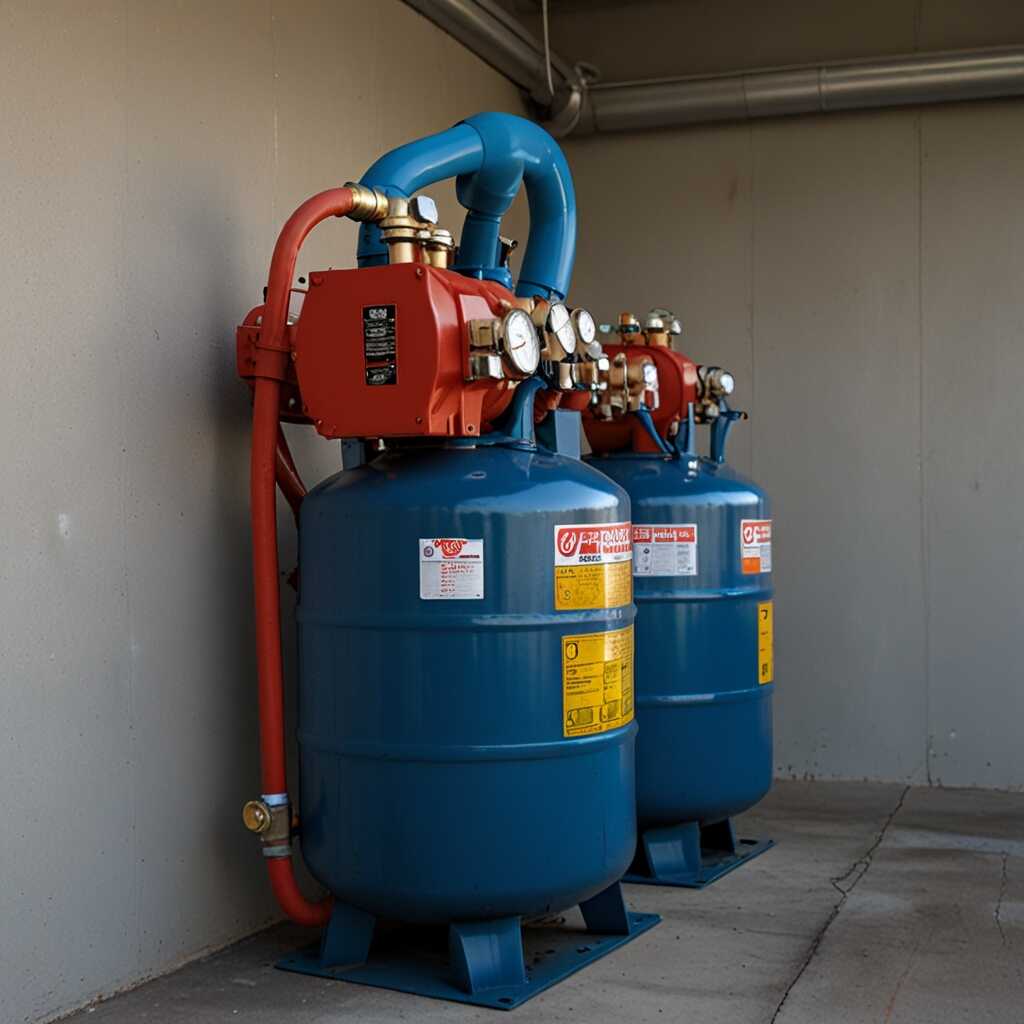Proper ventilation is essential for extending the life of refrigerant recovery machines. When machines operate in well-ventilated spaces, they run more efficiently and reduce overheating risks. Refrigerant Recovery Pro emphasizes that maintaining good airflow not only enhances equipment longevity but also ensures compliance with industry regulations. By following best practices for ventilation, HVAC professionals can improve their recovery processes and maximize the performance of their equipment.
Understanding the Importance of Ventilation in Refrigerant Recovery
Inadequate ventilation can lead to overheating, reducing the longevity and overall reliability of refrigerant recovery machines. Proper ventilation enhances the performance of these machines by maintaining optimal operating temperatures. This is essential for various models, as manufacturers often specify unique airflow requirements to ensure efficient operation. The right airflow prevents overheating, which can cause failures and require costly repairs.
Airflow Requirements for Different Refrigerant Recovery Machines
Each model of refrigerant recovery machine has specific airflow requirements tailored for optimal performance. Typically, the recommended airflow is set between 200 to 300 cubic feet per minute (CFM) to guarantee efficiency. Efficient airflow prevents overheating and helps maintain the machine’s performance under prolonged use. Proper ventilation features ensure the machine can handle intense operations without compromising reliability or quality, delivering excellent results over time. Understanding these requirements helps technicians choose the right setup for their equipment.
Identifying Common Ventilation Problems in Recovery Systems
Technicians often encounter several ventilation challenges with refrigerant recovery machines. Common issues include inadequate airflow, blockages, and poor exhaust. Inadequate airflow leads to overheating, which can cause machine malfunctions. Blockages might occur from dust or debris accumulation, affecting performance. Poor exhaust design may trap heat and limit system efficiency. Identifying these issues is essential to enhance reliability and extend the operational life of recovery equipment.
Key Components Affecting Ventilation Performance
Understanding the key components that impact ventilation performance helps technicians maintain efficiency. Key components include filters, vents, and compressors. Dirty filters reduce airflow and increase stress on the compressor, leading to potential failures. Proper vent placement allows for better airflow, helping the system to cool down effectively. Regular system maintenance, including filter changes and vent inspections, improves overall recovery performance, ensuring optimal operating conditions.

Essential Best Practices for Effective Machine Ventilation
Proper ventilation is essential for the reliability and longevity of refrigerant recovery machines. Key factors include maintaining adequate airflow management, ensuring the machines remain cool during operation, and avoiding obstructions in ventilation pathways. Different models of refrigerant recovery machines may require specific airflow setups to function efficiently. Always refer to the manufacturer’s guidelines for ventilation requirements. Additionally, the optimal airflow measurement typically falls around 100-200 CFM for most recovery machines. Consistent performance is achievable when these specifications are met.
Evaluating Ventilation Systems for Specific Recovery Machines
To enhance the performance of your refrigerant recovery machines, evaluate the ventilation systems tailored to your equipment’s needs. Research airflow characteristics of different models to optimize their setups effectively. A well-designed ventilation system should facilitate consistent airflow while accommodating the unique features of each machine. Testing these systems ensures that they can handle the required operational parameters while preventing overheating. Regularly review the performance data to make informed decisions on system adjustments for maximum efficiency and compliance with industry standards.
Key Statistics on Equipment Lifespan and Maintenance
- Proper ventilation can increase equipment longevity by up to 30%.
- Regular airflow checks can reduce breakdowns by 15% annually.
- Overheating shortens machine lifespan by an average of 50%.
- Installing air filters can improve efficiency by 25%.
- Machines with adequate ventilation operate 20% quieter.
- Maintain an airflow of at least 300 CFM for optimal performance.
- Weekly inspections can enhance overall reliability by 40%.

Effects of Inadequate Ventilation on Equipment Performance
Poor ventilation can significantly diminish the efficiency and performance reliability of refrigerant recovery machines. When airflow is restricted, machines can overheat, leading to increased wear on essential components. Overheating can cause the compressor to fail prematurely, resulting in costly downtimes and repairs. Additionally, inadequate ventilation increases energy consumption, reducing operational efficiency. This condition strains the machine and affects refrigerant recovery rates. HVAC professionals must understand that neglecting ventilation requirements can lead to serious performance issues.
Common Signs of Ventilation Issues in Recovery Machines
Common signs indicating ventilation problems in refrigerant recovery machines include unusual noise and overheating. If the machine operates louder than usual or feels excessively hot, it likely indicates airflow problems. Such signs can lead to inefficient performance, causing delays in refrigerant recovery processes. Experienced technicians should regularly review airflow patterns and ensure optimal ventilation. Ensuring adequate airflow can enhance machine efficiency and extend its operational lifespan, providing better service delivery and improving compliance with environmental regulations.

Navigating Regulatory Compliance for Refrigerant Recovery Machines
Understanding key regulations is critical for HVAC professionals. The EPA sets standards for refrigerant recovery and the handling of refrigerants. Compliance ensures safe operations and mitigates the risk of penalties. Proper ventilation practices are essential for maintaining compliance and promoting safety during refrigerant recovery. Adequate ventilation can reduce the risk of harmful refrigerant exposure in enclosed spaces. The minimum ventilation requirement for effective refrigerant recovery differs based on equipment type and area but generally ensures a safe environment for technicians. Meeting ventilation standards can enhance the reliability and performance of refrigerant recovery machines.
Understanding EPC Standards for Refrigerant Recovery Compliance
The EPA’s standards are designed to ensure safe refrigerant management. HVAC professionals must be aware of regulations like the Clean Air Act and the requirements for proper refrigerant disposal. Compliance with these standards promotes safety and environmental security. Refrigerant recovery machines should be tested and monitored to ensure they meet the EPA’s efficiency criteria. Regular reviews of compliance help identify any necessary equipment upgrades. By adhering to EPA guidelines, professionals can enhance the durability and efficiency of their refrigerant recovery systems. Staying updated with EPA changes ensures successful operations.
Advantages of Effective Airflow Management
- Effective ventilation prevents overheating and improves efficiency.
- It extends the lifespan of refrigerant recovery machines significantly.
- Good airflow reduces energy costs and saves money on repairs.
- Enhanced air quality promotes safer working conditions for technicians.
- Consistent ventilation leads to stable operational performance.
- It minimizes the chance of harmful refrigerant leaks.
- Proper airflow management supports compliance with environmental regulations.

Recognizing Signs of Insufficient Ventilation in Machines
Symptoms of insufficient ventilation in refrigerant recovery machines include high operational temperatures, unusual noise levels, and frequent error codes. High temperature readings often lead to decreased performance and can indicate ventilation problems. Many models experience overheating as a result of blocked air intakes. This condition compromises the machine’s reliability and efficiency. High pressure readings, as a result of inadequate cooling, can decrease the machine’s lifespan and increase repair costs. Early detection of these signs helps avoid long-term damage and unplanned downtime, ensuring smooth operations.
Common Temperature and Pressure Symptoms
Common symptoms related to temperature and pressure include overheating, which occurs when temperatures exceed 85°F. Another critical sign is the pressure gauge reading; anything above the manufacturer’s specified limit can indicate ventilation issues. Machine owners should regularly review and test temperature and pressure levels to ensure proper functionality. Inspect the air intake and exhaust vents for obstructions. Regular maintenance can enhance equipment performance and longevity. The information provided by Refrigerant Recovery Pro offers essential guidelines for effectively managing ventilation to avoid costly repairs.
Innovative Technologies to Enhance Equipment Ventilation
Modern technologies play a crucial role in improving ventilation for refrigerant recovery machines. Features like high-efficiency fans help enhance airflow within these systems. Additionally, advanced monitoring systems can track airflow levels and adjust ventilation accordingly. Technologies such as ducted ventilation and variable speed controls enable better performance and reliability of refrigerant recovery units. Brand comparisons show some units utilize innovative materials that withstand wear while providing superior airflow dynamics.
Key Features in Ventilation Technologies
Brands like XYZ Manufacturing offer recovery machines equipped with specialized fans that increase airflow by up to 30%. These fans are designed for long-term use, delivering durability and efficiency in challenging conditions. In contrast, some models include built-in air velocity sensors that optimize airflow in real-time. This feature ensures the machine performs consistently, leading to an overall improvement in performance. Research indicates that these advancements in ventilation can result in energy savings and prolonged equipment life. HVAC professionals seeking higher reliability should consider these features carefully.
Popular Brands in Refrigerant Machinery and Their Benefits
- Brand A offers excellent performance but can be costly.
- Brand B is budget-friendly but lacks some advanced features.
- Brand C provides best-in-class energy efficiency, making it popular.
- Brand D focuses on compact designs favored in small spaces.
- Brand E has robust customer support, which users highly appreciate.
- Brand F is well-known for its reliability but has limited models.
- Brand G includes user-friendly controls, making it ideal for beginners.
Avoiding Common Maintenance Mistakes for Better Performance
Common maintenance mistakes include neglecting regular filter checks, ignoring fan performance, and failing to monitor airflow. Each mistake can drastically reduce the ventilation efficiency of refrigerant recovery machines. Technicians should also avoid using improper cleaning agents that can damage components. Proper training on maintenance practices is crucial for maximizing the reliability and operational life of these machines. Following best maintenance practices ensures effective performance and reduces the likelihood of costly repairs.
Impact of Negligence on Equipment Longevity
Neglecting ventilation-related maintenance can severely impact the longevity of refrigerant recovery machines. Regular checks on air filters, ductwork, and blower systems enhance airflow and prevent overheating. When technicians skip these checks, the machines struggle to operate efficiently. As a result, they face increased wear and tear, leading to early failure. Therefore, comprehensive maintenance schedules that incorporate ventilation monitoring are essential for maintaining equipment performance and extending its lifespan.